Product Description
Precision Shaft by CNC Turning Machining
Our advantage:
*Specialization in CNC formulations of high precision and quality
*Independent quality control department
*Control plan and process flow sheet for each batch
*Quality control in all whole production
*Meeting demands even for very small quantities or single units
*Short delivery times
*Online orders and production progress monitoring
*Excellent price-quality ratio
*Absolute confidentiality
*Various materials (stainless steel, iron, brass, aluminum, titanium, special steels, industrial plastics)
*Manufacturing of complex components of 1 – 1000mm.
Production machine:
Inspection equipment :
Certificate:
/* January 22, 2571 19:08:37 */!function(){function s(e,r){var a,o={};try{e&&e.split(“,”).forEach(function(e,t){e&&(a=e.match(/(.*?):(.*)$/))&&1
| Material: | Carbon Steel |
|---|---|
| Load: | Drive Shaft |
| Stiffness & Flexibility: | Stiffness / Rigid Axle |
| Journal Diameter Dimensional Accuracy: | IT01-IT5 |
| Axis Shape: | Straight Shaft |
| Shaft Shape: | Real Axis |
| Customization: |
Available
| Customized Request |
|---|

What maintenance practices are essential for prolonging the lifespan of driveline components?
Implementing proper maintenance practices is crucial for ensuring the longevity and optimal performance of driveline components. Regular maintenance helps identify potential issues, prevent major failures, and prolong the lifespan of driveline components. Here are some essential maintenance practices for prolonging the lifespan of driveline components:
1. Regular Inspections:
Performing regular visual inspections of driveline components is essential for detecting any signs of wear, damage, or misalignment. Inspect the driveline components, including driveshafts, universal joints, CV joints, differentials, and transmission components, for any cracks, leaks, excessive play, or unusual noise. Identifying and addressing issues early can prevent further damage and potential driveline failure.
2. Lubrication:
Proper lubrication of driveline components is crucial for minimizing friction, reducing wear, and ensuring smooth operation. Follow the manufacturer’s recommendations for lubrication intervals and use the appropriate type and grade of lubricant. Regularly check and maintain the lubrication levels in components such as bearings, gears, and joints to prevent excessive heat buildup and premature wear.
3. Fluid Changes:
Fluids play a vital role in driveline component performance and longevity. Regularly change fluids, such as transmission fluid, differential oil, and transfer case fluid, according to the manufacturer’s recommended intervals. Over time, these fluids can become contaminated or break down, leading to compromised performance and increased wear. Fresh fluids help maintain proper lubrication, cooling, and protection of driveline components.
4. Alignment and Balancing:
Proper alignment and balancing of driveline components are essential for minimizing vibration, reducing stress, and preventing premature wear. Periodically check and adjust the alignment of driveshafts, ensuring they are properly aligned with the transmission and differential. Additionally, balance rotating components, such as driveshafts or flywheels, to minimize vibrations and prevent excessive stress on driveline components.
5. Torque Check:
Regularly check and ensure that all driveline components are properly torqued according to the manufacturer’s specifications. Over time, fasteners can loosen due to vibrations or thermal expansion and contraction. Loose fasteners can lead to misalignment, excessive play, or even component failure. Regular torque checks help maintain the integrity and performance of the driveline system.
6. Maintenance of Supporting Systems:
Driveline components rely on the proper functioning of supporting systems, such as cooling systems and electrical systems. Ensure that cooling systems are functioning correctly, as overheating can cause driveline components to degrade or fail. Additionally, regularly inspect electrical connections, wiring harnesses, and sensors to ensure proper communication and operation of driveline components.
7. Proper Driving Techniques:
The way a vehicle is driven can significantly impact the lifespan of driveline components. Avoid aggressive driving, sudden acceleration, and excessive braking, as these actions can put undue stress on the driveline components. Smooth and gradual acceleration, proper shifting techniques, and avoiding excessive load or towing capacities help minimize wear and prolong component life.
8. Service and Maintenance Records:
Maintain comprehensive service and maintenance records for the driveline components. Keep track of all maintenance tasks, repairs, fluid changes, and inspections performed. These records help ensure that maintenance tasks are performed on time, provide a history of component performance, and assist in diagnosing any recurring issues or patterns.
By following these maintenance practices, vehicle owners can prolong the lifespan of driveline components, minimize the risk of failures, and ensure optimal performance and reliability of the driveline system.

How do drivelines contribute to the efficiency and performance of vehicle propulsion?
Drivelines play a crucial role in the efficiency and performance of vehicle propulsion systems. They are responsible for transmitting power from the engine to the wheels, converting rotational energy into forward motion. Drivelines contribute to efficiency and performance in several ways:
1. Power Transmission:
Drivelines efficiently transfer power from the engine to the wheels, ensuring that a significant portion of the engine’s output is converted into useful work. By minimizing power losses, drivelines maximize the efficiency of the propulsion system. High-quality driveline components, such as efficient transmissions and low-friction bearings, help optimize power transmission and reduce energy waste.
2. Gear Ratios:
Drivelines incorporate transmissions that allow for the selection of different gear ratios. Gear ratios match the engine’s torque and speed with the desired vehicle speed, enabling the engine to operate in its most efficient range. By optimizing the gear ratio based on the driving conditions, drivelines improve fuel efficiency and overall performance.
3. Torque Multiplication:
Drivelines can provide torque multiplication to enhance the vehicle’s performance during acceleration or when climbing steep gradients. Through the use of torque converters or dual-clutch systems, drivelines can increase the torque delivered to the wheels, allowing for quicker acceleration without requiring excessive engine power. Torque multiplication improves the vehicle’s responsiveness and enhances overall performance.
4. Traction and Control:
Drivelines contribute to vehicle performance by providing traction and control. Driveline components, such as differentials and limited-slip differentials, distribute torque between the wheels, improving traction and stability. This is particularly important in challenging driving conditions, such as slippery surfaces or off-road environments. By optimizing power delivery to the wheels, drivelines enhance vehicle control and maneuverability.
5. Handling and Stability:
Driveline configurations, such as front-wheel drive, rear-wheel drive, and all-wheel drive, influence the vehicle’s handling and stability. Drivelines distribute the weight of the vehicle and determine which wheels are driven. Different driveline setups offer distinct handling characteristics, such as improved front-end grip in front-wheel drive vehicles or enhanced cornering stability in rear-wheel drive vehicles. By optimizing the driveline configuration for the vehicle’s intended purpose, manufacturers can enhance handling and stability.
6. Hybrid and Electric Propulsion:
Drivelines are integral to hybrid and electric vehicle propulsion systems. In hybrid vehicles, drivelines facilitate the seamless transition between the engine and electric motor power sources, optimizing fuel efficiency and performance. In electric vehicles, drivelines transmit power from the electric motor(s) to the wheels, ensuring efficient and smooth acceleration. By incorporating drivelines specifically designed for hybrid and electric vehicles, manufacturers can maximize the efficiency and performance of these propulsion systems.
7. Weight Optimization:
Drivelines contribute to overall vehicle weight optimization. By using lightweight materials, such as aluminum or carbon fiber, in driveline components, manufacturers can reduce the overall weight of the propulsion system. Lighter drivelines help improve fuel efficiency, handling, and vehicle performance by reducing the vehicle’s mass and inertia.
8. Advanced Control Systems:
Modern drivelines often incorporate advanced control systems that enhance efficiency and performance. Electronic control units (ECUs) monitor various parameters, such as engine speed, vehicle speed, and driver inputs, to optimize power delivery and adjust driveline components accordingly. These control systems improve fuel efficiency, reduce emissions, and enhance overall drivability.
By optimizing power transmission, utilizing appropriate gear ratios, providing torque multiplication, enhancing traction and control, improving handling and stability, supporting hybrid and electric propulsion, optimizing weight, and incorporating advanced control systems, drivelines significantly contribute to the efficiency and performance of vehicle propulsion systems. Manufacturers continually strive to develop driveline technologies that further enhance these aspects, leading to more efficient and high-performing vehicles.

What benefits do drivelines offer for different types of vehicles and equipment?
Drivelines offer several benefits for different types of vehicles and equipment across various industries. They play a critical role in power transmission, mobility, efficiency, and overall performance. Here’s a detailed explanation of the benefits drivelines offer for different types of vehicles and equipment:
1. Power Transmission: Drivelines are designed to efficiently transmit power from the engine or power source to the driven components, such as wheels, tracks, implements, or machinery. They ensure the smooth transfer of torque, allowing vehicles and equipment to generate the necessary power for propulsion, lifting, hauling, or other tasks. By effectively transmitting power, drivelines maximize the performance and productivity of vehicles and equipment.
2. Mobility and Maneuverability: Drivelines enable vehicles and equipment to achieve mobility and maneuverability across various terrains and working conditions. By transmitting power to the wheels or tracks, drivelines provide the necessary traction and control to overcome obstacles, navigate uneven surfaces, and operate in challenging environments. They contribute to the overall stability, handling, and agility of vehicles and equipment, allowing them to move efficiently and safely.
3. Versatility and Adaptability: Drivelines offer versatility and adaptability for different types of vehicles and equipment. They can be designed and configured to meet specific requirements, such as front-wheel drive, rear-wheel drive, four-wheel drive, or all-wheel drive systems. This flexibility allows vehicles and equipment to adapt to various operating conditions, including normal roads, off-road terrains, agricultural fields, construction sites, or industrial facilities. Drivelines also accommodate different power sources, such as internal combustion engines, electric motors, or hybrid systems, enhancing the adaptability of vehicles and equipment.
4. Efficiency and Fuel Economy: Drivelines contribute to efficiency and fuel economy in vehicles and equipment. They optimize power transmission by utilizing appropriate gear ratios, minimizing energy losses, and improving overall system efficiency. Drivelines with advanced technologies, such as continuously variable transmissions (CVTs) or automated manual transmissions (AMTs), can further enhance efficiency by continuously adjusting gear ratios based on load and speed conditions. Efficient driveline systems help reduce fuel consumption, lower emissions, and maximize the operational range of vehicles and equipment.
5. Load Carrying Capacity: Drivelines are designed to handle and transmit high torque and power, enabling vehicles and equipment to carry heavy loads. They incorporate robust components, such as heavy-duty axles, reinforced drive shafts, and durable differentials, to withstand the demands of load-bearing applications. Drivelines ensure the reliable transmission of power, allowing vehicles and equipment to transport materials, tow trailers, or carry payloads efficiently and safely.
6. Safety and Control: Drivelines contribute to safety and control in vehicles and equipment. They enable precise control over acceleration, deceleration, and speed, enhancing driver or operator confidence and maneuverability. Drivelines with features like traction control systems, limited-slip differentials, or electronic stability control provide additional safety measures by improving traction, stability, and handling in challenging road or operating conditions. By ensuring optimal power distribution and control, drivelines enhance the overall safety and stability of vehicles and equipment.
7. Durability and Reliability: Drivelines are built to withstand harsh operating conditions and provide long-term durability and reliability. They are engineered with high-quality materials, precise manufacturing processes, and advanced technologies to ensure the driveline components can endure the stresses of power transmission. Well-designed drivelines require minimal maintenance, reducing downtime and enhancing the overall reliability of vehicles and equipment.
8. Specialized Functionality: Drivelines offer specialized functionality for specific types of vehicles and equipment. For example, in off-road vehicles or heavy-duty construction equipment, drivelines with features like differential locks, torque vectoring, or adjustable suspension systems provide enhanced traction, stability, and control. In agricultural machinery, drivelines with power take-off (PTO) units enable the connection of various implements for specific tasks like plowing, seeding, or harvesting. Such specialized driveline features enhance the performance and versatility of vehicles and equipment in their respective applications.
In summary, drivelines provide numerous benefits for different types of vehicles and equipment. They ensure efficient power transmission, facilitate mobility and maneuverability, offer versatility and adaptability, contribute to efficiency and fuel economy, handle heavy loads, enhance safety and control, provide durability and reliability, and offer specialized functionality. By incorporating well-designed drivelines, manufacturers can optimize the performance, productivity, and overall functionality of vehicles and equipment across various industries.


editor by CX 2024-05-14
China Standard Gear Universal Joint Agricultural Machinery Transmission Shaft Baler Transmission Shaft High Horsepower Transmission Shaft Drive Shaft Drive Line
Product Description
Gear universal joint agricultural machinery transmission shaft Baler transmission shaft High horsepower transmission shaft
Product Features: Electronic Processing Customization: Yes Brand: Electronic Processing
Model: Electric machine Applicable model: Agricultural machine Length: Electric machine mm
***Degree: diameter of electrode: electrode d Origin: electrode
Part number: Dianyi
| Type: | Transmission Shaft |
|---|---|
| Usage: | Agricultural Products Processing, Farmland Infrastructure, Tillage, Harvester, Planting and Fertilization, Grain Threshing, Cleaning and Drying |
| Material: | Carbon Steel |
| Power Source: | Diesel |
| Weight: | Discuss Personally |
| After-sales Service: | One Year |
| Customization: |
Available
| Customized Request |
|---|

What maintenance practices are essential for prolonging the lifespan of driveline components?
Implementing proper maintenance practices is crucial for ensuring the longevity and optimal performance of driveline components. Regular maintenance helps identify potential issues, prevent major failures, and prolong the lifespan of driveline components. Here are some essential maintenance practices for prolonging the lifespan of driveline components:
1. Regular Inspections:
Performing regular visual inspections of driveline components is essential for detecting any signs of wear, damage, or misalignment. Inspect the driveline components, including driveshafts, universal joints, CV joints, differentials, and transmission components, for any cracks, leaks, excessive play, or unusual noise. Identifying and addressing issues early can prevent further damage and potential driveline failure.
2. Lubrication:
Proper lubrication of driveline components is crucial for minimizing friction, reducing wear, and ensuring smooth operation. Follow the manufacturer’s recommendations for lubrication intervals and use the appropriate type and grade of lubricant. Regularly check and maintain the lubrication levels in components such as bearings, gears, and joints to prevent excessive heat buildup and premature wear.
3. Fluid Changes:
Fluids play a vital role in driveline component performance and longevity. Regularly change fluids, such as transmission fluid, differential oil, and transfer case fluid, according to the manufacturer’s recommended intervals. Over time, these fluids can become contaminated or break down, leading to compromised performance and increased wear. Fresh fluids help maintain proper lubrication, cooling, and protection of driveline components.
4. Alignment and Balancing:
Proper alignment and balancing of driveline components are essential for minimizing vibration, reducing stress, and preventing premature wear. Periodically check and adjust the alignment of driveshafts, ensuring they are properly aligned with the transmission and differential. Additionally, balance rotating components, such as driveshafts or flywheels, to minimize vibrations and prevent excessive stress on driveline components.
5. Torque Check:
Regularly check and ensure that all driveline components are properly torqued according to the manufacturer’s specifications. Over time, fasteners can loosen due to vibrations or thermal expansion and contraction. Loose fasteners can lead to misalignment, excessive play, or even component failure. Regular torque checks help maintain the integrity and performance of the driveline system.
6. Maintenance of Supporting Systems:
Driveline components rely on the proper functioning of supporting systems, such as cooling systems and electrical systems. Ensure that cooling systems are functioning correctly, as overheating can cause driveline components to degrade or fail. Additionally, regularly inspect electrical connections, wiring harnesses, and sensors to ensure proper communication and operation of driveline components.
7. Proper Driving Techniques:
The way a vehicle is driven can significantly impact the lifespan of driveline components. Avoid aggressive driving, sudden acceleration, and excessive braking, as these actions can put undue stress on the driveline components. Smooth and gradual acceleration, proper shifting techniques, and avoiding excessive load or towing capacities help minimize wear and prolong component life.
8. Service and Maintenance Records:
Maintain comprehensive service and maintenance records for the driveline components. Keep track of all maintenance tasks, repairs, fluid changes, and inspections performed. These records help ensure that maintenance tasks are performed on time, provide a history of component performance, and assist in diagnosing any recurring issues or patterns.
By following these maintenance practices, vehicle owners can prolong the lifespan of driveline components, minimize the risk of failures, and ensure optimal performance and reliability of the driveline system.

Are there any limitations or disadvantages associated with driveline systems?
While driveline systems offer numerous advantages in terms of power transmission and vehicle performance, there are also some limitations and disadvantages associated with their use. It’s important to consider these factors when designing, operating, and maintaining driveline systems. Let’s explore some of the limitations and disadvantages:
1. Complex Design and Integration:
Driveline systems can be complex in design, especially in modern vehicles with advanced technologies. They often consist of multiple components, such as transmissions, differentials, transfer cases, and drive shafts, which need to be properly integrated and synchronized. The complexity of the driveline system can increase manufacturing and assembly challenges, as well as the potential for compatibility issues or failures if not designed and integrated correctly.
2. Energy Losses:
Driveline systems can experience energy losses during power transmission. These losses occur due to factors such as friction, heat generation, mechanical inefficiencies, and fluid drag in components like gearboxes, differentials, and torque converters. The energy losses can negatively impact overall efficiency and result in reduced fuel economy or power output, especially in systems with multiple driveline components.
3. Limited Service Life and Maintenance Requirements:
Driveline components, like any mechanical system, have a limited service life and require regular maintenance. Components such as clutches, bearings, gears, and drive shafts are subject to wear and tear, and may need to be replaced or repaired over time. Regular maintenance, including lubrication, adjustments, and inspections, is necessary to ensure optimal performance and prevent premature failures. Failure to perform proper maintenance can lead to driveline malfunctions, increased downtime, and costly repairs.
4. Weight and Space Constraints:
Driveline systems add weight and occupy space within a vehicle. The additional weight affects fuel efficiency and overall vehicle performance. Moreover, the space occupied by driveline components can limit design flexibility, particularly in compact or electric vehicles where space optimization is crucial. Manufacturers must strike a balance between driveline performance, vehicle weight, and available space to meet the requirements of each specific vehicle type.
5. Noise, Vibration, and Harshness (NVH):
Driveline systems can generate noise, vibration, and harshness (NVH) during operation. Factors such as gear meshing, unbalanced rotating components, or improper driveline alignment can contribute to unwanted vibrations or noise. NVH issues can affect driving comfort, passenger experience, and vehicle refinement. Manufacturers employ various techniques, including vibration dampening materials, isolators, and precision engineering, to minimize NVH levels, but achieving complete elimination can be challenging.
6. Limited Torque Handling Capability:
Driveline systems have limitations in terms of torque handling capability. Excessive torque beyond the rated capacity of driveline components can lead to failures, such as shearing of gears, clutch slippage, or drive shaft breakage. High-performance vehicles or heavy-duty applications may require specialized driveline components capable of handling higher torque loads, which can increase costs and complexity.
7. Traction Limitations:
Driveline systems, particularly in vehicles with two-wheel drive configurations, may experience traction limitations, especially in slippery or off-road conditions. Power is typically transmitted to only one or two wheels, which can result in reduced traction and potential wheel slippage. This limitation can be mitigated by utilizing technologies such as limited-slip differentials, electronic traction control, or implementing all-wheel drive systems.
While driveline systems provide crucial power transmission and vehicle control, they do have limitations and disadvantages that need to be considered. Manufacturers, designers, and operators should carefully assess these factors and implement appropriate design, maintenance, and operational practices to optimize driveline performance, reliability, and overall vehicle functionality.

How do drivelines handle variations in torque, speed, and angles of rotation?
Drivelines are designed to handle variations in torque, speed, and angles of rotation within a power transmission system. They incorporate specific components and mechanisms that enable the smooth and efficient transfer of power while accommodating these variations. Here’s a detailed explanation of how drivelines handle variations in torque, speed, and angles of rotation:
Variations in Torque:
Drivelines encounter variations in torque when the power requirements change, such as during acceleration, deceleration, or when encountering different loads. To handle these variations, drivelines incorporate several components:
1. Clutch: In manual transmission systems, a clutch is used to engage or disengage the engine’s power from the driveline. By partially or completely disengaging the clutch, the driveline can temporarily interrupt power transfer, allowing for smooth gear changes or vehicle stationary positions. This helps manage torque variations during shifting or when power demands change abruptly.
2. Torque Converter: Automatic transmissions employ torque converters, which are fluid couplings that transfer power from the engine to the transmission. Torque converters provide a certain amount of slip, allowing for torque multiplication and smooth power transfer. The slip in the torque converter helps absorb torque variations and dampens abrupt changes, ensuring smoother operation during acceleration or when power demands fluctuate.
3. Differential: The differential mechanism in drivelines compensates for variations in torque between the wheels, particularly during turns. When a vehicle turns, the inner and outer wheels travel different distances, resulting in different rotational speeds. The differential allows the wheels to rotate at different speeds while distributing torque to each wheel accordingly. This ensures that torque variations are managed and power is distributed effectively to optimize traction and stability.
Variations in Speed:
Drivelines also need to handle variations in rotational speed, especially when the engine operates at different RPMs or when different gear ratios are selected. The following components aid in managing speed variations:
1. Transmission: The transmission allows for the selection of different gear ratios, which influence the rotational speed of the driveline components. By changing gears, the transmission adjusts the speed at which power is transferred from the engine to the driveline. This allows the driveline to adapt to different speed requirements, whether it’s for quick acceleration or maintaining a consistent speed during cruising.
2. Gearing: Driveline systems often incorporate various gears in the transmission, differential, or axle assemblies. Gears provide mechanical advantage by altering the speed and torque relationship. By employing different gear ratios, the driveline can adjust the rotational speed and torque output to match the requirements of the vehicle under different operating conditions.
Variations in Angles of Rotation:
Drivelines must accommodate variations in angles of rotation, especially in vehicles with flexible or independent suspension systems. The following components help manage these variations:
1. Universal Joints: Universal joints, also known as U-joints, are flexible couplings used in drivelines to accommodate variations in angles and misalignments between components. They allow for smooth power transmission between the drive shaft and other components, compensating for changes in driveline angles during vehicle operation or suspension movement. Universal joints are particularly effective in handling non-linear or variable angles of rotation.
2. Constant Velocity Joints (CV Joints): CV joints are specialized joints used in drivelines, especially in front-wheel-drive and all-wheel-drive vehicles. They allow the driveline to handle variations in angles while maintaining a constant velocity during rotation. CV joints are designed to mitigate vibrations, power losses, and potential binding or juddering that can occur due to changes in angles of rotation.
By incorporating these components and mechanisms, drivelines effectively handle variations in torque, speed, and angles of rotation. These features ensure smooth power transfer, optimal performance, and enhanced durability in various driving conditions and operating scenarios.


editor by CX 2023-09-30
Best China manufacturer & factory China in Varanasi India manufacturer Helical teeth standard steel material rack gear pinion 1 model With high quality best price

EPG will always adhere to it enterprise spirit of being practical, innovative, efficient and excellent to make the top international transmission drive.
Overview
Quick Details
- Applicable Industries:
-
Building Material Shops, Manufacturing Plant, Machinery Repair Shops, Food & Beverage Factory, farms, Energy & Mining
- Other Country:
-
TIANJIN ,CHINA
- Product Name:
-
Helical gear
- Application:
-
Mechanical Equipment
- processing:
-
Ground
- Standard:
-
Standard/customized
- Color:
-
Natural
- Teeth type:
-
We warmly welcome the friends from all the world!
Helical
- Pressure angle:
-
20 degree
- Left hand angle:
-
19°31’42”
- Precision:
-
Din6-Din10
Supply Ability
- Supply Ability:
- 5000 Piece/Pieces per Day
Packaging & Delivery
- Packaging Details
- plastic bags +cartons+wodden case
- Port
- TIANJIN PORT/SHANGHAI PORT/QINGDAO PORT
-
Lead Time
: -
Quantity(Bags) 1 – 100 101 – 1000 >1000 Est. Time(days) 7 15 To be negotiated
Online Customization
Close up of two yokes with the universal joint. Note the slight oozing of grease from the UJ seal ends, the clump of grease is from inside the yoke splined shaft area –Drive (outer) yoke has a female (usual spline) hole and “Y” shape end that is the universal joint (UJ) mount. –UJ is a cross shaped casting having roller bearings enclosed with caps at all four points and is held into the yoke with four “C” clips –Inner yoke and drive shaft is another yoke welded to the drive end, of the drive shaft. –Driven shaft and inner yoke is the driven shaft that rides inside of the drive shaft and has a yoke welded at the driven end –UJ another UJ as above
EPG offer widest range of gearbox and speed reducers, conveyor chains and transmission parts like gear, sprocket, racks, pulley, shaves and taper bushes etc for various applications
Product Description
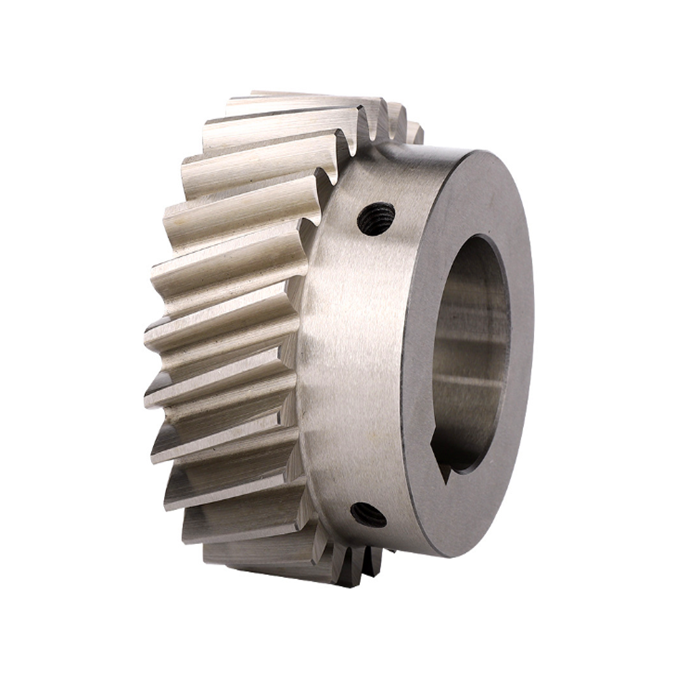

|
product name |
helical gear |
|
processing |
hobbing,grinding ,milling,shaving,shaping,lapping |
|
pressure angle |
20 degree |
|
left hand angle |
19°31’42” |
|
material |
C45/stainless steel/brass/plastic/nylon |
|
surface treatment |
blacking,polishing,anodization/chrome plating,zicIt was born in 1997, and is the fruit of the merger of different gearboxes brands. From the first products, it inherited a philosophy based in quality, profitability and technical rigor. EPG is present in all european market, through a complete distribution chain consisting of each market’s principal actors. plate |
Product detail
Different type gear


worm gear


helical gear
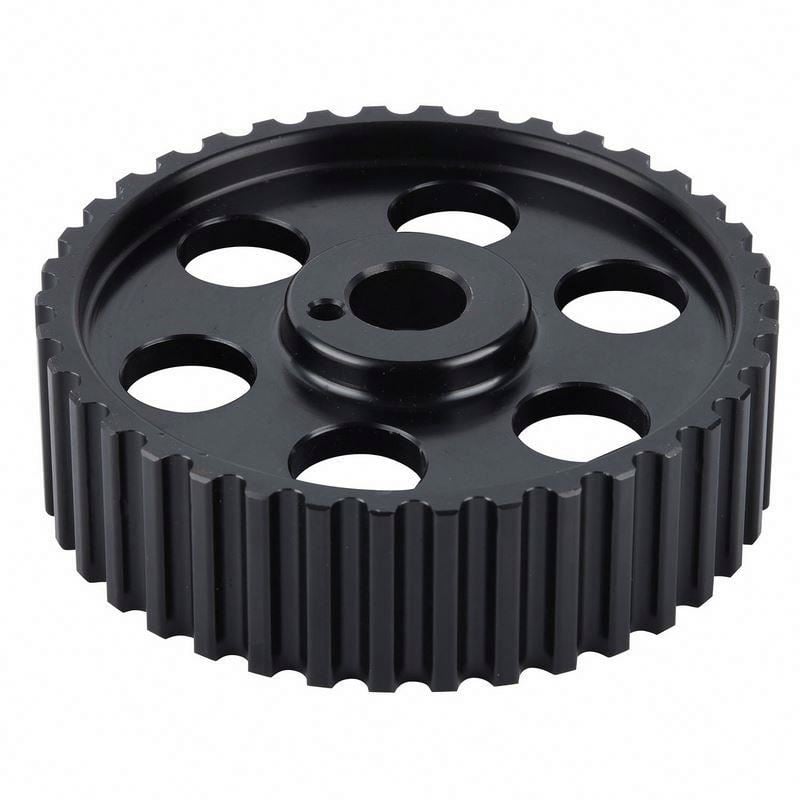

spur gear
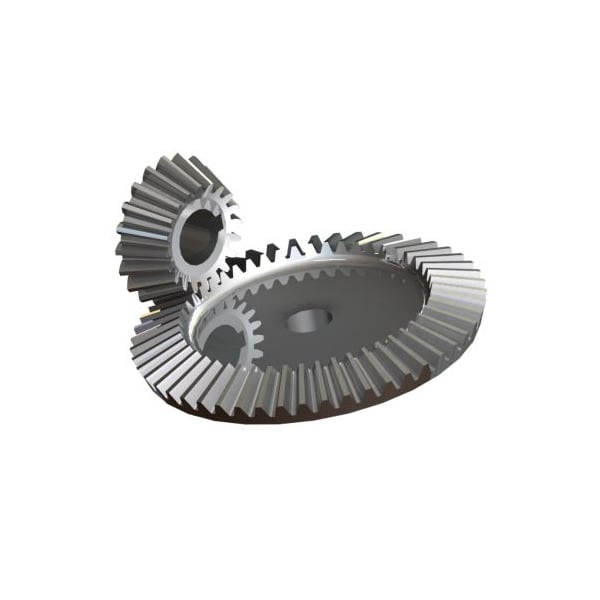

bevel gear
gear shaft
spiral bevel gear
Different material
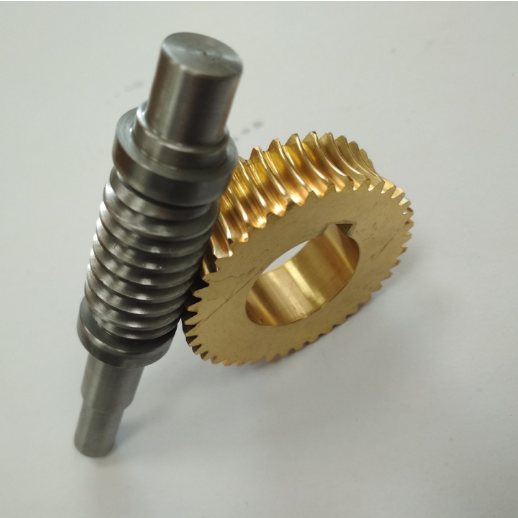

brass gear
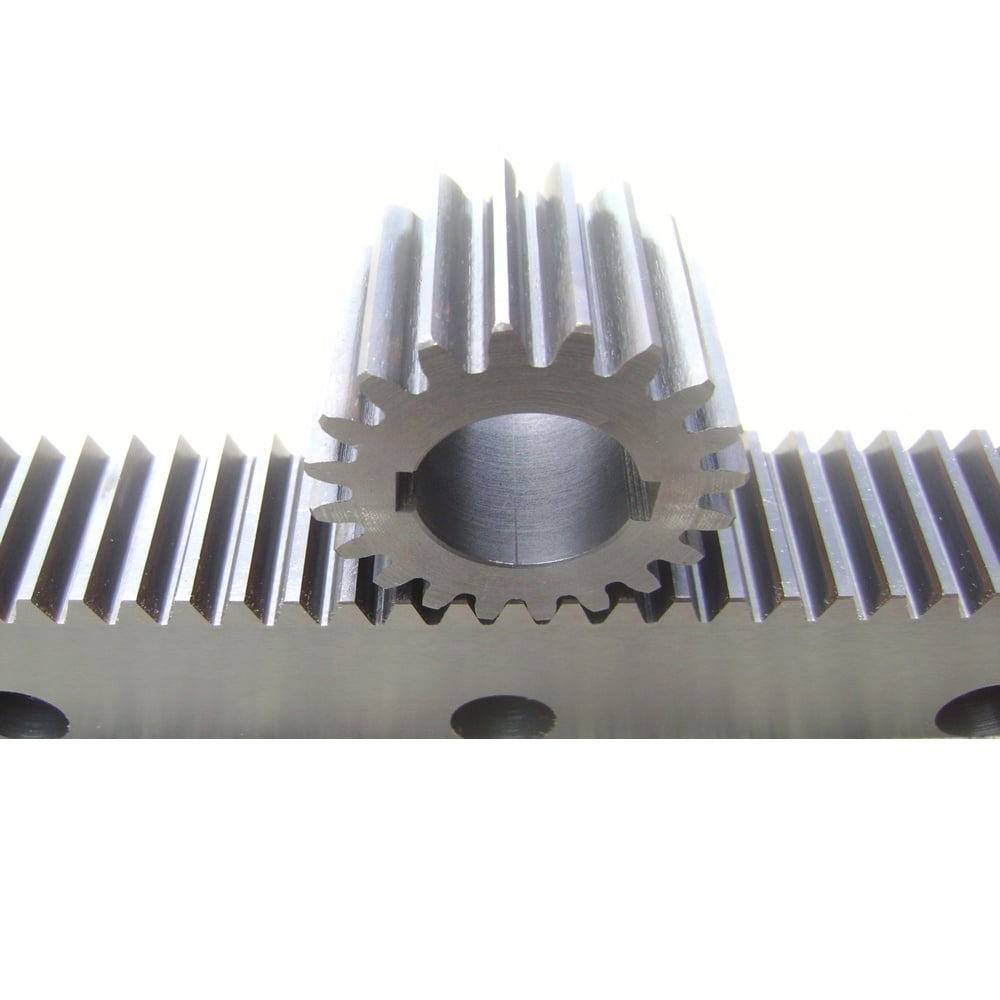

C45/42CR gear
plastic gear/nylon/pom
stainless steel
Helical gear catalogue
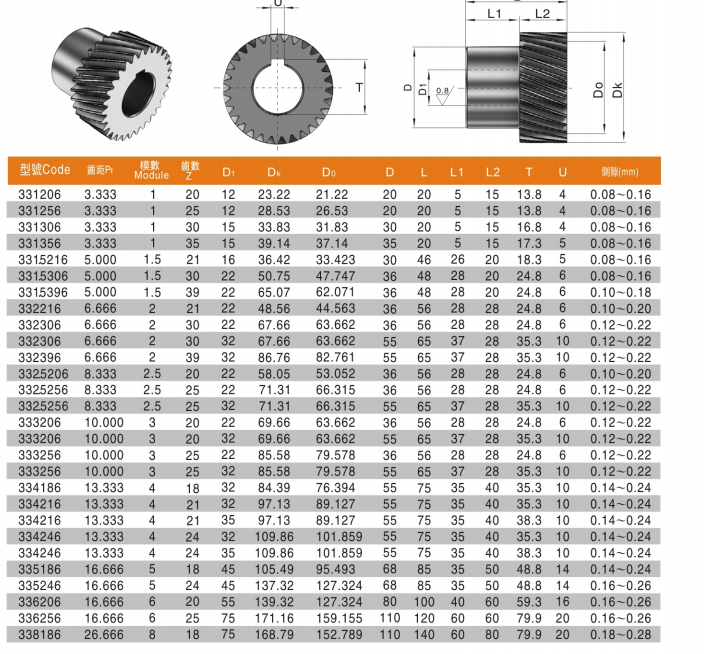

Application
Packing & Delivery
Payment
Main product
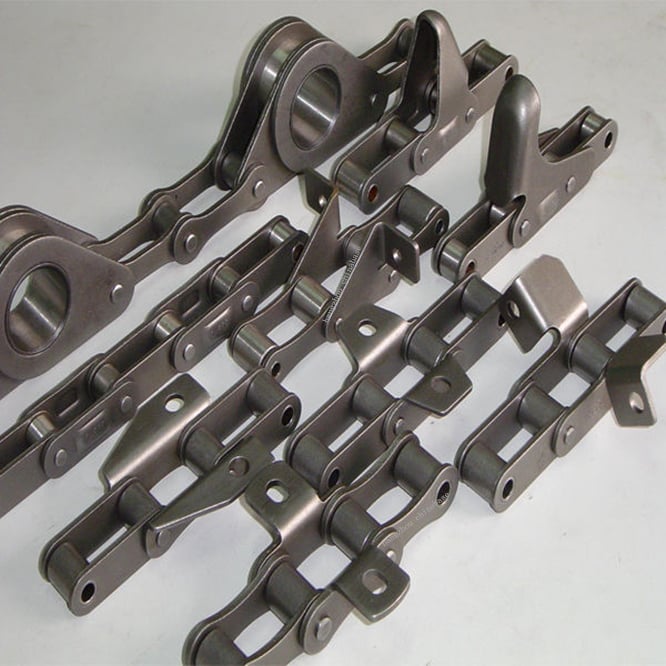

roller chain


gear
timing pulley


gear rack
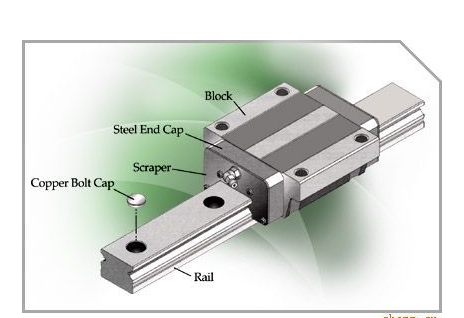

linear rail and block
ball screw
Company Profie
HangZhou EPG – The biggest transmission parts manufacuturer in China Electrical Equipment Co.,Ltd was founded in HangZhou in 2008 and is a professional manufacturer and exporter that is concerned with the design, development and production.With detailed requirments, we can also develop your special designed product. Our product range includes all kinds of helical gear, spur gear, bevel gear, gear rack, worm gear, sprockets,chains,bearings.Keeping in mind that good service is the key to cooperating with clients, we strive to meet high quality standards, offer competitive prices and ensure prompt delivery. In this way, our products have continued to gain market acceptance and customers satisfaction over the past few years. We are aiming to meet the demands of the clients around the world..If you are interested in any of our products or would like to discuss a potential order, please feel free to contact us. We are looking forward to developing successful business relationships with new clients around the world in the future.







Best China manufacturer & factory China manufacturer Standard transmission machine M3 42Cr material helical pinion gear With high quality best price

EPG was awarded with “famous product of Zhejiang Province” and “famous brand of Zhejiang Province”.
Overview
Quick Details
- Applicable Industries:
-
Building Material Shops, Manufacturing Plant, Machinery Repair Shops, Food & Beverage Factory, farms, Construction works , Energy & Mining, agricultural machiner
- Other Country:
-
TIANJIN ,CHINA
- Product Name:
-
Helical gear
- Application:
-
Mechanical Equipment
- processing:
-
Ground
- Standard:
-
Standard/customized
- Color:
-
Natural
- Teeth type:
-
Helical
- Pressure angle:
-
20 degree
- Left hand angle:
-
19°31’42”
- Precision:
-
Din6-Din10
Supply Ability
- Supply Ability:
- 5000 Piece/Pieces per Day
Packaging & Delivery
- Packaging Details
- plastic bags +cartons+wodden case
- Port
- TIANJIN PORT/SHANGHAI PORT/QINGDAO PORT
-
Lead Time
: -
Quantity(Bags) 1 – 100 101 – 1000 >1000 Est. Time(days) 7 15 To be negotiated
Online Customization
EPG – one of the biggest transmisison suppliers inWe warmly welcome the friends from all the world! China. Every process, every section, every function in EPG is demanded to be done one step following another, carefully and cautiously, from material selection, reformation to manufacturing accessories, from components heat treatment to automatic assembly, from quality control to product inspection and testing and from order dealing to after sales service.”We are always serving our customers with our best products.” EPG will always adhere to it enterprise spirit of being practical, innovative, efficient and excellent to make the top international transmission drive.
Product Description
|
product name |
helical gear |
|
module |
M1-M8 |
|
pressure angle |
20 degree |
|
left hand angle |
19°31’42” |
|
material |
C45/stainless steel/brass/plastic/nylon |
|
surface treatment |
blacking,polishing,anodization/chrome plating,zic plate |
Product detail


Helical gear catalogue


Application


Packing & Delivery
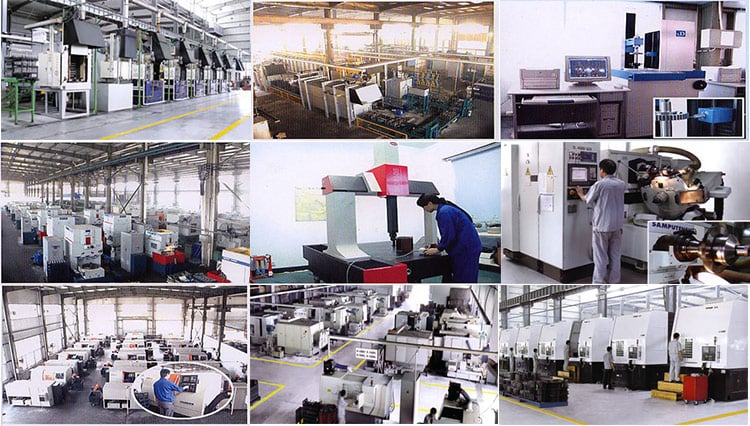

Payment
In addition to our two sales offices in the US, EPG employs a nationwide network of sales partners who will provide expert technical support to your company.
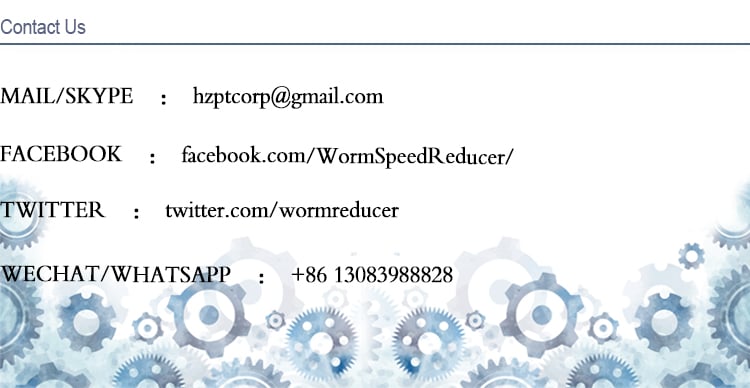

Main product
roller chain
gear
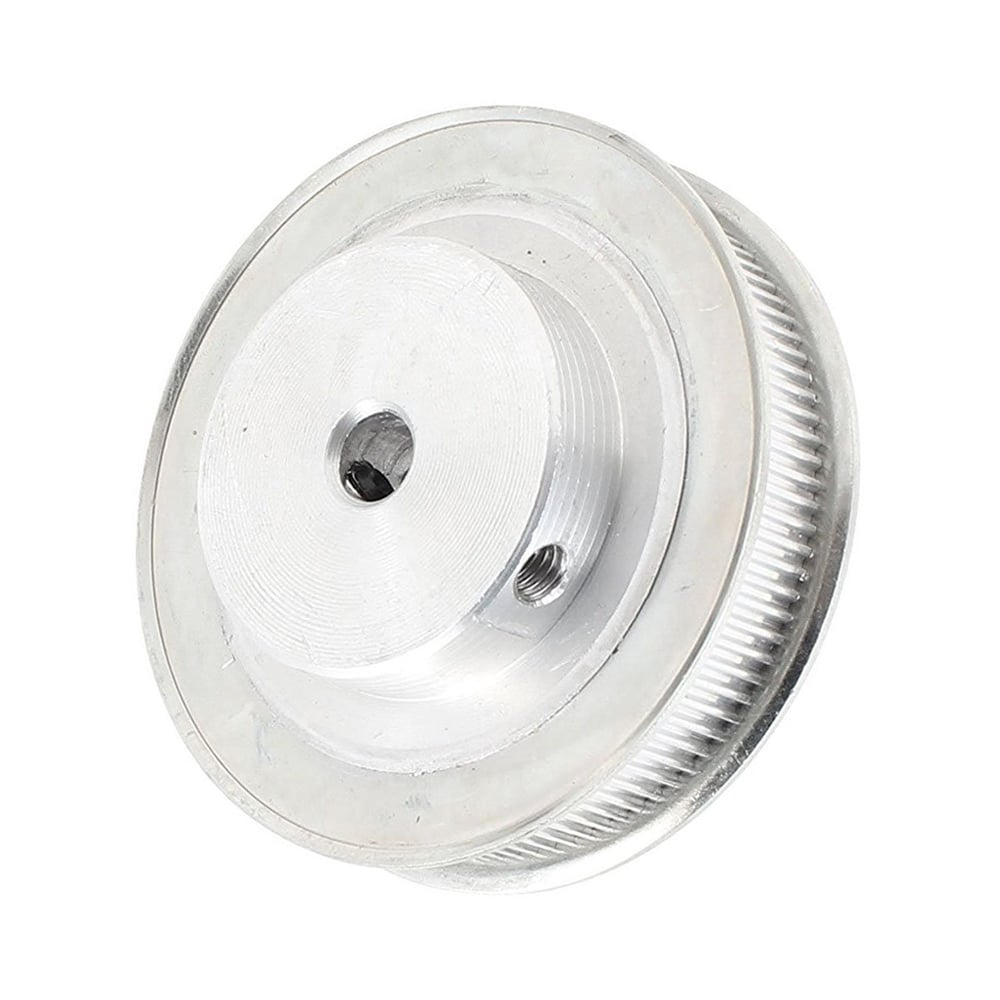

timing pulley


gear rack
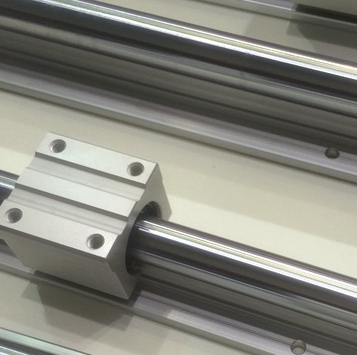

linear rail and block
Cat 3 Point Hitch How do I operate the PTO on my tractor? Prior to running the PTO, you will need your tractor to reach the starting RPM (revolutions per minute). Once the starting RPM has been reached you can begin operating the PTO.
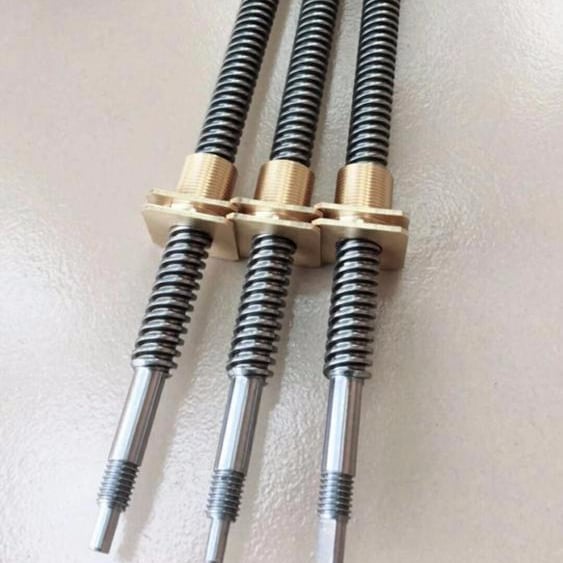

ball screw
Company Profie
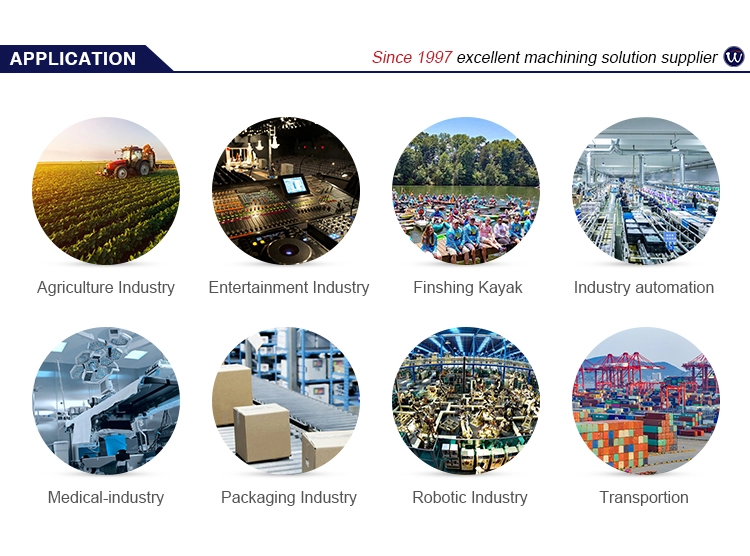



.HangZhou EGP Electrical Equipment Co.,Ltd was founded in HangZhou in 1997 and is a professional manufacturer and exporter that is concerned with the design, development and production.With detailed requirments, we can also develop your special designed product. Our product range includes all kinds of helical gear, spur gear, bevel gear, gear rack, worm gear, sprockets,chains,bearings.Keeping in mind that good service is the key to cooperating with clients, we strive to meet high quality standards, offer competitive prices and ensure prompt delivery. In this way, our products have continued to gain market acceptance and customers satisfaction over the past few years. We are aiming to meet the demands of the clients around the world..If you are interested in any of our products or would like to discuss a potential order, please feel free to contact us. We are looking forward to developing successful business relationships with new clients around the world in the future.



China High Qualtiy Long life highly standard modular R series energy saving helical gear speed reducer inline gearbox
Error: